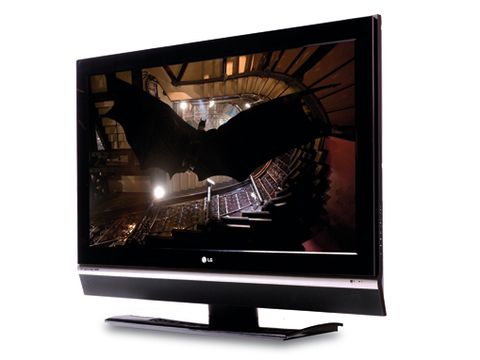TechRadar Verdict
A high-def free zone, and its standard definition performance is rubbish
Pros
- +
Reasonable appearance
Cons
- -
Colours are poor
No digital analogue tuner
Few features
Why you can trust TechRadar
We don't want any school bully accusations thrown at us, because Goodmans doesn't claim to be in the premiere league of flatscreen TV manufacturers, but this 42in plasma is a waste of money.
Getting the positives out of the way: the PDP42X20 is aesthetically reasonable without winning any style awards; it's not bad sonically; it's a plasma screen; and (most importantly) it's cheap. Now here comes the avalanche of horror stories.
For starters there's a total absence of high-definition capable inputs: HDMI, DVI and component video inputs are all missing. So there's no way of getting either analogue or digital HD into this set.
The PDP42X20 does have the standard analogue S-video and composite video options, but why would you want a plasma TV that's resolutely incapable of high- definition viewing?
Clearly Goodmans has been holidaying on Jupiter while the hi-def revolution has transformed the AV industry. The low native resolution of 852 x 480 makes our hearts sink further. We thought plasmas as basic as this had vanished.
The bad news isn't over yet though, because also missing from our must have list is a digital tuner for Freeview pictures. With the analogue switch-off quickly approaching, Goodmans should feel ashamed of itself.
Features-wise the cupboard is also bare. There is a noise reduction system, film mode, 3D comb filter and a dynamic bass mode. And that's it. When playing a DVD of 2001: A Space Odyssey it's immediately obvious that this Goodmans' handling of standard-definition pictures is as dated as the space station crew's dodgy fashion sense.
Earning its stripes
This is the sort of plasma picture that we slagged off a couple of years ago, never mind now. Colour blends appear as stripes and faces have a vertical line structure all over them. Not good at all.
Adding to this plasma's problems are disgusting amounts of dot crawl, giving the picture a really dirty feel - and not in an authentic way. A green tint threatens to dominate, there's precious little fine detailing, and whites look bleached.
That's not to say that this plasma is completely useless. There are some vibrant colours on show, it's just that they don't look realistic, particularly on skin tones. Black levels, so often a TV's Achilles heel, aren't the dog's dinner we were expecting, and do give some sense of depth to the emptiness of the Discovery's voyage. And there's little sign of fizzing noise, either.
Sonically speaking, the Goodmans puts in a good performance that screams out for a better picture. The package comes with two 10W speakers that first need attaching to the TV's sides. While not as effective as a separate sound system, they still manage to give the soundstage plenty of width.
Crumbs of comfort, perhaps, but unfortunately the majority of the picture performance is so dire, that when the TV does (sort of) deliver, we're too busy trying to block out the bad stuff that makes the whole viewing experience so woeful
If you're skint and have no interest in high- definition viewing, this TV may be for you. But we think you'd be mad to consider spending £800 on this, when there are much better large screens out there for not much more money
Tech.co.uk was the former name of TechRadar.com. Its staff were at the forefront of the digital publishing revolution, and spearheaded the move to bring consumer technology journalism to its natural home – online. Many of the current TechRadar staff started life a Tech.co.uk staff writer, covering everything from the emerging smartphone market to the evolving market of personal computers. Think of it as the building blocks of the TechRadar you love today.

